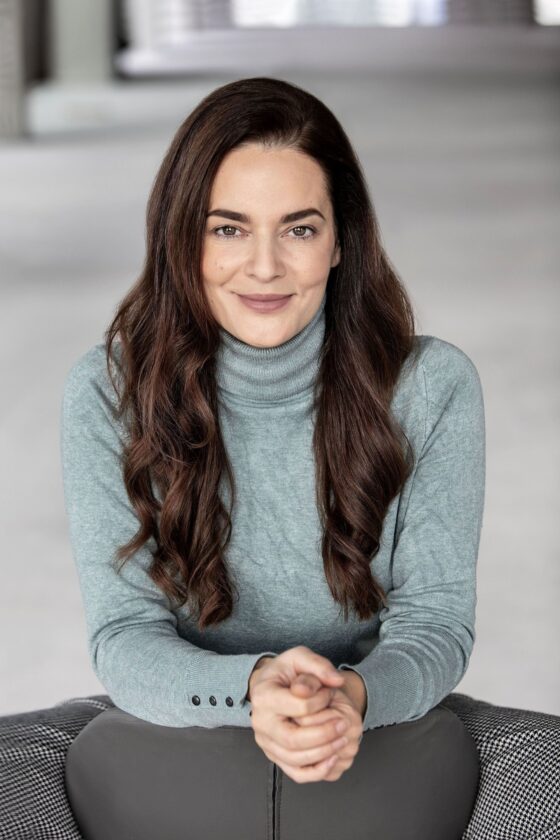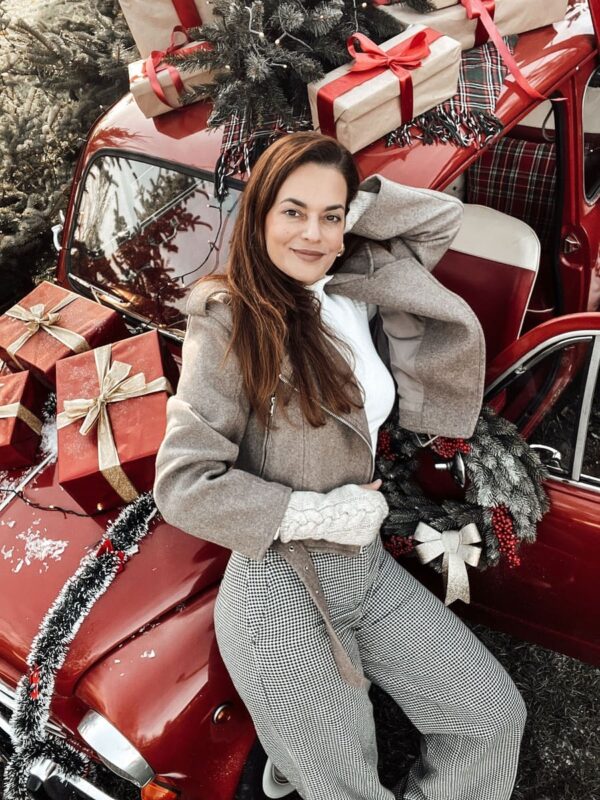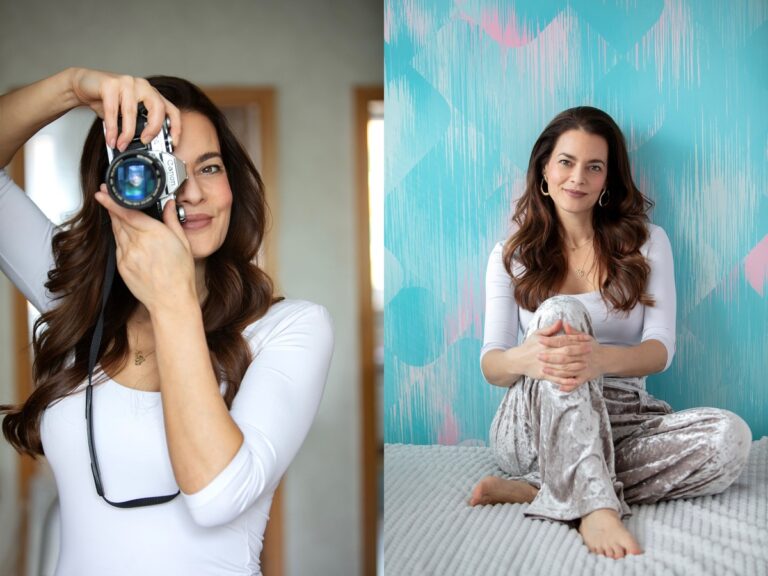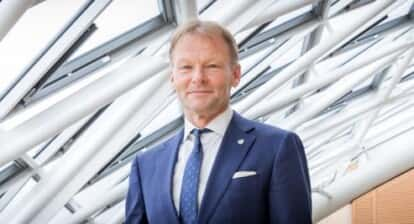Silvia Slafkovská is a professional photographer who has spent more than two decades capturing people—moments rich in expression, energy, and personal stories. Her signature style is marked by authenticity, gentleness, and a profound interest in the human being.
She specializes in lifestyle and business portraits, collaborating with companies, agencies, and individuals. You’ve likely seen her photos in the media, on LinkedIn, in PR articles, and as visuals for successful professionals.
In the interview, recorded during the April LinkedInLovers “Akčné ženy” event in Bratislava, where Mgr. art. Silvia Slafkovská spoke, she revealed:
- why women are often hesitant to step in front of the lens,
- what types of clients she works with,
- why she sometimes bursts out laughing during sessions,
- whether photography can be compared to sports,
- and which shoot she found most challenging.
How do you, as a photographer, perceive women’s feelings about stepping in front of the camera?
I think it’s largely about that constant self-doubt. I see it even at home—I believe I have very beautiful daughters, but even when I tell them that and try to convince them, they don’t always believe me. And yet, I think confidence should come primarily from the closest people in our lives. It starts in childhood and through upbringing. Of course, I’m not going to say every single day, “You’re a Vasilisa of great beauty,” but when I see them starting to doubt themselves or I know it could help, I compliment them. It’s important to give sincere praise. And I see exactly the same with my clients. Many don’t hold themselves in high regard. They think they’re not beautiful—that they’re not photogenic. I see it all the time.
Do you encounter women hesitant even to decide whether to be photographed at all?
Definitely. People are different. Some enjoy being photographed but delay it for years—often until they’ve used the same conference photo for a decade. Then there are those who don’t like to be photographed but need it for their professional presentation. I always try to encourage them, telling them we’ll manage. That I can help even with things causing them physical discomfort. For example, I often hear, “I’ll get photographed once I lose weight.” I then tell them we don’t have to wait. By using lighting, composition, and gentle styling, I can create images in which they see themselves how they wish—or even better.
Another situation: frequently, women start with, “I’m not photogenic.” Frankly, I try to ignore that sentence, because I’ve had the exact opposite experience. I often see an interesting person in front of me. It doesn’t have to be about conventional beauty, and yet the photogenic quality is there. Again, childhood or youth insecurity plays a role—just one bad photo, poor lighting, or wrongly used lenses can haunt a person for years. We come to believe we can’t have a good photo.

Photographer Silvia Slafkovska
And how do women react after the shoot?
They’re often moved, sometimes overwhelmed—even before any retouching. They say I worked a miracle. And the gratitude is amazing. Even more importantly, I see their self‑confidence boost and they light up for the rest of the day.
Which clients do you see more of—those nervous about being photographed or those who arrive confident and unafraid?
I’d split them into two main groups: individual shoots and team or corporate sessions. When I shoot individually—one‑on‑one—I focus entirely on one person. Often these are entrepreneurs, coaches, business owners—people with a wealth of experience and interesting life stories. They’re personalities. Even if they don’t love being photographed, they know they need it, so they cooperate well. Often, they return year after year with new themes or projects.
So, for them, the photo session isn’t a one‑time thing but part of ongoing personal or professional development?
Exactly. Especially for those active on LinkedIn. Gradually, they “shoot” their best images there, then realize they need something new, more current. Sometimes I prompt them—like the coach I teased for using the same picture in every post for a year. I commented, “Aren’t you tired of drinking that same year‑old coffee?”
Do references and connections play a big role?
Absolutely. Many clients come through referrals, directly or indirectly. For example, someone follows another person’s LinkedIn profile, thinks about it, and then sees a colleague worked with me—that’s when hesitation disappears. I understand that for some, especially women in marketing roles at larger firms, it feels risky to approach someone unknown. On social media, you can seem one way, but reality is different: handling stress, a team’s dynamics, shooting under time pressure—all of that. That’s why corporate clients often decide after seeing results from other companies I’ve worked with.
Read also: Judit Dublin about how Lidl Slovakia operates within the country
And LinkedIn is critical for that group?
Yes, LinkedIn is highly specific. It’s where photos get fully used for presenting personality, for PR, media presence. Everyone chooses their main communication channel—media, PR articles, personal website, LinkedIn. Those active there frequently refresh their visuals and keep it consistent.
You mentioned that corporate sessions often involve many people…
Usually these are single‑day events where I photograph dozens of people—about 10 per day is typical. Below that is fine. But I’ve done much larger counts.
View this post on Instagram
What’s your record?
On one corporate shoot, campaign work for SaS and Richard Sulík, I photographed all party members when they entered Parliament. That was roughly 60–70 people in one day.
That sounds intense…
It was truly exhausting. But these experiences push my limits. I learn what I’m capable of physically and mentally. It sharpens patience, endurance, energy. And it’s not just photography, each person brings unique energy and dynamic. Some shoots flow easily; others are tougher and can be mentally draining.
You mentioned it’s not sedentary
Definitely not. Even editing doesn’t keep me seated for long. And during the shoot itself, I help set people up naturally so less time is needed for retouching.
I don’t deliver large quantities of photos nor do extensive retouching.
What about last‑minute rushes and scheduling bottlenecks?
Sometimes clients hesitate for weeks, then several contact me simultaneously wanting a session within three days. That can get extreme. But those who delay must expect delays. Some things happen fast, but others simply need time.
Shooting can feel athletic?
Exactly! It’s practically action shooting, especially the session we did. New environment, no tripod allowed. When you don’t know the space you move, explore angles, respond fast.
With unfamiliar spaces, a tripod slows you down?
Yes. Standard corporate shoots use a tripod for technical stability and controlled composition. But in dynamic settings, I work handheld. We’re in the flow—tuning in and going naturally.
If I’m shooting a beautiful model who inspires me, I’m fully present. It’s like an actor entering the stage—forgetting pain and exhaustion. I know I’m where I belong.
I loved how you described your work as a conversation between you and the subject
For me, it’s a natural way to chat with fascinating people. Sometimes it’s fast. Other times waiting for makeup or with a larger crew—there’s more space. That’s when I expand my horizons, see into different worlds. I’m sometimes in their firm, sometimes in their private space. I truly value that.
There’s a kind of “photographic privacy”—I don’t want to call it intimacy, but it’s an invisible connection, usually enjoyable for the other person, too.
I love when people say: “I hate being photographed, but this was completely great—I didn’t even notice.” Especially men, often they say they want to get it over with fast. But with a sense of humour, we flip it into a fun experience.
And sometimes giggle fits happen?
Definitely during longer corporate shoots. I have to concentrate, and then a small comment or gesture triggers laughter. Like in childhood, laughing when you’re not supposed to. It’s a release from intense focus.
What’s your favourite story—even a funny one?
I’ve got many, but one stands out: A client from Prague was shooting an ad with a model in a studio. Everything was set, but boom, the power went out. I discovered the studio had their electricity cut for unpaid bills. The owner assured me it’d be back in 30 minutes. So, I returned to the client like nothing had happened. Those were the longest 30 minutes of my life.
The other day, we shot a stylist, also the campaign’s face. There was a misunderstanding: the agency thought she’d bring clothes; she expected them to. So, clothes never arrived. She handled it brilliantly, sent clothes from her wardrobe, saved the day. Experiences like these taught me nothing surprises me now. Shoot days packed with the unexpected.

Photographer Silvia Slafkovska
What do you love photographing most?
I love photographing people. Now it’s more business‑portrait lifestyle than pure advertising. Something natural, relaxed, human. It’s my style—a blend of my advertising background and what I love today.
Do you prefer familiar setups or new creative styles?
A bit of both. I enjoy bringing something unconventional when clients are open to playful ideas. It’s essential we connect before the session, understand intentions and desired outcomes. When I sense creative openness, I offer unusual concepts or support their ideas. I might suggest browsing Pinterest or stock visuals. If needed, I ask for a few keywords—how they want to appear: trustworthy, successful, proud… That helps me tailor the session to their desired messaging.
You said you always “feel” the person first—how they are from every side.
Yes. I research their social profiles or Google to see their real photos versus how they want to present themselves. That’s often where issues arise, they see themselves differently than others perceive them. So, I never push them to feel good about an image if they don’t. It won’t work. If it feels forced, it shows. The entire process is about collaboration.
We shoot directly to the computer and review shots in real time. We discuss expression, energy, messaging. There’s no point in giving a big “Hollywood” smile when they choose a serious poker face. It’s all about authenticity.
View this post on Instagram
What do you notice first in a person?
That’s a fascinating question. Hard to say universally, but I notice the smile and the nose. Someone may have a prominent nose, small eyes, anything, but a beautiful smile saves it all. A smile is simply the best filter.
If they can summon a smile on demand, you think it’s a fit?
Yes, but it’s not always simple. Sometimes it’s a delicate corner-of-the-mouth lift. There’s a difference between laugh and a smile, and sometimes that subtle natural smile is the real challenge.
Your most difficult shoot?
Definitely the shoot with physicians and oncologists—they had forgotten how to smile. Their daily work is extremely demanding, life and death situations. Then they’re asked to do a photo shoot? It felt redundant to them. They arrived reluctantly, like pulled by horses. Many thought two shots would be enough, and I had to carefully consider what to say to keep them there. Some were in their 60s, 70s, 80s, highly esteemed, but part of this shoot involved boosting their own confidence. Many didn’t feel beautiful or photogenic. It was both professional detachment and personal self‑doubt.
What’s the secret of a good photographer?
Honestly, I believe it’s a complete failure if the photographer stays silent—just stands, shoots, hoping the subject will do something. You must guide them. I constantly direct them during the shoot and act as their mirror, reflecting what I see and how it appears. That collaboration is key to creating something that works in the final result.
Over the years, I’ve honed a sense for what works. If I have a good feeling about a photo, usually the client does too.







